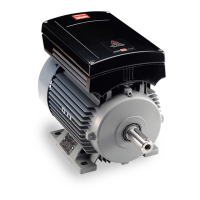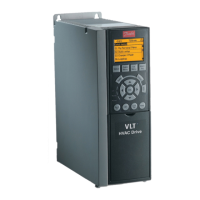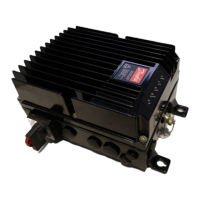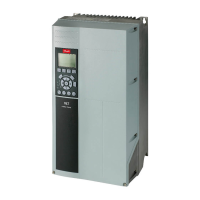VLT
®
FCM Series
A higher switching frequency leads to a quieter running
unit but higher losses in the electronics of the FC motor
and makes an appropriate derating necessary.
See below Torque carateteristic
■ Vibration and shock
FCM 300 Series has been tested according to a
procedure based on the following standards:
IEC 60068-2-6: Vibration (sinusoidal) - 1970
IEC 60068-2-34: Random vibration broad-band
- general requirements
IEC 60068-2-35: Random vibration broad-band
- high reproducibility
IEC 60068-2-36: Random vibration broad-band
- medium reproducibility
FCM 300 Series complies with requirements
that correspond to conditions in the standards
mentioned above.
■ Air humidity
FCM 300 Series has been designed to meet
the IEC 60068-2-3 standard, EN 50178 item
9.4.2.2/DIN 40040, class E, at 40°C.
Cyclic damp heat according to IEC 60068-2-30, 40°C.
■ Efficiency
2pole
4pole
■ Mains supply interference/harmonics
A FC motor takes up a non-sinusoidal current from
mains, which increases the input current I
RMS
.A
nonsinusoidal current can be transformed by means of
a Fourier analysis and split up into sine wave currents
with different frequencies, i.e. different harmonic
currents I
N
with 50 Hz as the basic frequency:
Harmonic
currents
I
1
I
5
I
7
I
11
Hz 50 Hz 250 Hz 350 Hz 550 Hz
In/I1 [%] 100% 44% 29% 8%
The harmonics do not affect the power consumption
directly, but increase the heat losses in the installation
(transformer, cables). Consequently, in plants
with a rather high percentage of rectifier load, it
is important to maintain harmonic currents at a
low level to avoid overload of the transformer and
high temperature in the cables.
MG.03.H3.02 - VLT is a registered Danfoss trademark
90
